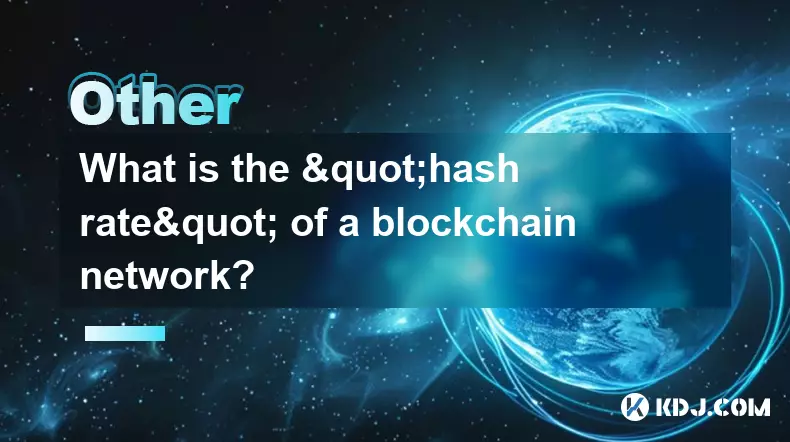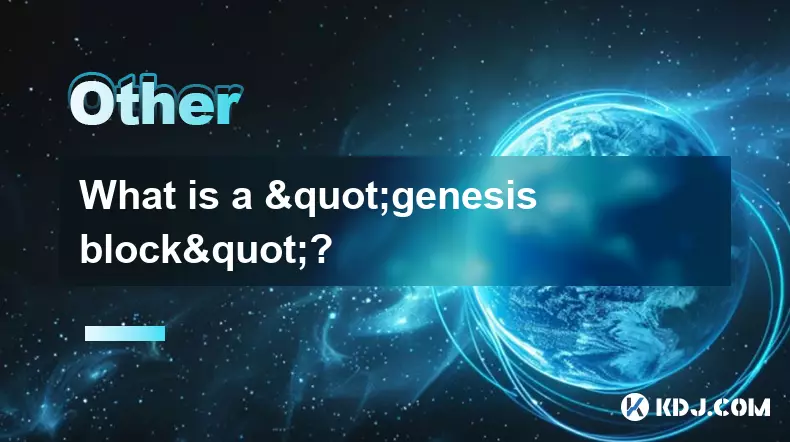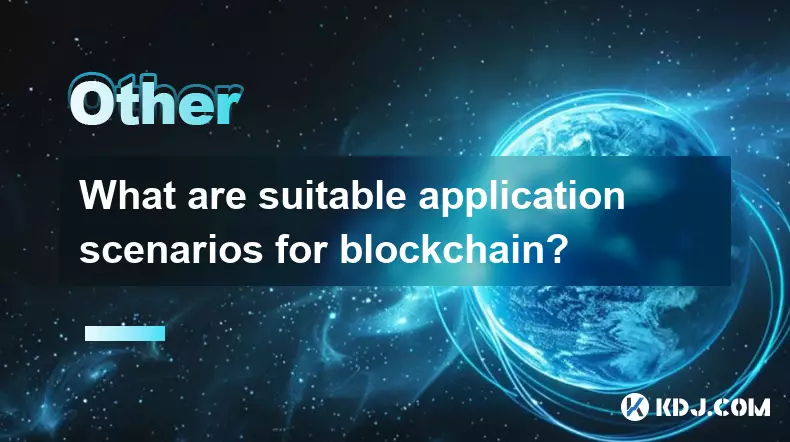-
 bitcoin
bitcoin $106975.071866 USD
-0.29% -
 ethereum
ethereum $3871.670850 USD
-0.07% -
 tether
tether $1.000261 USD
-0.01% -
 bnb
bnb $1084.417621 USD
-0.50% -
 xrp
xrp $2.348167 USD
0.82% -
 solana
solana $185.621736 USD
0.45% -
 usd-coin
usd-coin $0.999833 USD
-0.04% -
 tron
tron $0.313423 USD
0.81% -
 dogecoin
dogecoin $0.188856 USD
0.54% -
 cardano
cardano $0.630416 USD
-0.49% -
 hyperliquid
hyperliquid $36.506353 USD
2.24% -
 ethena-usde
ethena-usde $0.999584 USD
-0.01% -
 chainlink
chainlink $16.750026 USD
-0.77% -
 stellar
stellar $0.313373 USD
0.37% -
 bitcoin-cash
bitcoin-cash $465.978560 USD
-1.57%
What is a timestamp server in blockchain?
A blockchain timestamp server ensures data integrity by immutably recording when blocks are created, preventing tampering and enabling trustless verification of transaction order.
Aug 13, 2025 at 10:36 am

Understanding the Role of a Timestamp Server in Blockchain
A timestamp server in blockchain technology is a critical component that ensures the chronological integrity of transactions and blocks within the network. Its primary function is to provide verifiable proof that certain data existed at a specific point in time. In a decentralized environment where trust is distributed, the timestamp server helps prevent tampering and double-spending by anchoring each block with a time-based marker. This mechanism is essential to maintain the immutability and trustworthiness of the blockchain.
Each time a new block is created, it includes a timestamp that is validated by the network. This timestamp is not simply a local clock reading from a single node. Instead, it is derived from a consensus mechanism that considers the time reported by multiple nodes across the network. The block timestamp must fall within acceptable limits defined by the protocol to be accepted. For example, in Bitcoin, a block’s timestamp must be greater than the median of the past 11 blocks and not more than two hours ahead of the node’s perceived network time.
How Timestamping Works in Practice
The process of timestamping begins when a miner or validator assembles a group of transactions into a candidate block. Before broadcasting this block, they assign a timestamp based on their system clock, adjusted to align with network consensus rules. This timestamp is embedded within the block header, which also includes the previous block hash, Merkle root, nonce, and version number.
The network nodes receiving the block validate the timestamp using predefined criteria:
- The timestamp must not be earlier than the median time of the previous 11 blocks.
- It must not exceed the current network-adjusted time by more than a set threshold (e.g., 2 hours in Bitcoin).
- It must be consistent with the progression of time across the chain.
If the timestamp fails these checks, the block is rejected. This ensures that no participant can artificially backdate or forward-date a block to manipulate transaction order or gain unfair advantages in mining rewards.
Decentralized vs. Centralized Timestamping
In traditional systems, timestamping often relies on a centralized authority, such as a trusted time-stamping service (TSA), which digitally signs data with the current time. However, blockchain eliminates the need for such central entities by distributing timestamp validation across the network. Every full node independently verifies the legitimacy of block timestamps, reinforcing decentralization.
This decentralized approach enhances security because no single entity controls the timeline of the blockchain. Even if a malicious actor attempts to submit a block with an incorrect timestamp, the majority of nodes will reject it. The consensus rules act as a self-regulating mechanism, ensuring that the blockchain’s timeline remains coherent and resistant to manipulation.
Furthermore, the integration of cryptographic hashing with timestamping strengthens data integrity. Once a block is timestamped and added to the chain, altering any transaction within it would require changing the block’s hash and all subsequent blocks—a computationally infeasible task without controlling the majority of the network’s hash power.
Technical Implementation in Major Blockchains
Different blockchains implement timestamping with slight variations. In Bitcoin, the timestamp field is a 4-byte Unix timestamp stored in the block header. Nodes use network-adjusted time, calculated from the median of timestamps reported by connected peers, to evaluate incoming blocks.
In Ethereum, the process is similar but operates within a shorter block time framework. Validators (or miners in pre-merge Ethereum) include a timestamp when proposing a new block. The Ethereum Virtual Machine (EVM) exposes this timestamp via the TIMESTAMP opcode, which smart contracts can access to trigger time-based logic.
For example, a smart contract designed to release funds after a specific date uses the blockchain’s timestamp to verify whether the condition is met. However, miners have limited discretion in setting the timestamp, constrained by rules that prevent large deviations from real time. This prevents abuse while allowing minor adjustments for network synchronization.
Other blockchains like Cardano and Polkadot employ more advanced consensus mechanisms (Ouroboros and NPoS, respectively), where slot leaders or validators are assigned specific time windows to produce blocks. These systems embed timing into the consensus layer, making timestamping more predictable and secure.
Security Implications and Potential Vulnerabilities
While blockchain timestamping is robust, it is not immune to risks. One known vulnerability is timestamp manipulation by miners who might slightly adjust the clock to influence mining difficulty adjustments. In Bitcoin, difficulty recalibrates every 2016 blocks based on the time it took to mine them. If miners consistently report earlier timestamps, the network may perceive the mining period as shorter, leading to an unwarranted increase in difficulty.
Another concern is time drift in nodes with inaccurate clocks. Although the network uses median time to mitigate this, prolonged clock skew can lead to temporary forks or block rejection. To counter this, best practices recommend running nodes with Network Time Protocol (NTP) synchronization enabled.
Additionally, in proof-of-stake systems, timestamping must prevent validators from gaining advantages by backdating blocks to meet eligibility conditions. Protocols address this by enforcing strict bounds and requiring validators to follow synchronized time sources.
Practical Use Cases of Blockchain Timestamping
Beyond securing transaction order, blockchain timestamping enables real-world applications. One prominent use is document verification. Users can hash a document and record the hash on the blockchain with a timestamp, creating a tamper-proof proof of existence. This is widely used in intellectual property, legal contracts, and academic credentials.
Another application is in supply chain tracking, where each movement of goods is recorded with a timestamp, ensuring transparency and traceability. Auditors can verify the sequence and timing of events without relying on a central database.
In decentralized finance (DeFi), timestamping is crucial for interest accrual, loan maturity, and options expiration. Smart contracts rely on the blockchain’s clock to execute time-sensitive operations, ensuring fairness and predictability.
Frequently Asked Questions
Can a blockchain timestamp be changed after a block is confirmed?No, once a block is confirmed and added to the blockchain, its timestamp becomes immutable. Altering it would require changing the block’s hash and all subsequent blocks, which is computationally impractical due to the proof-of-work or proof-of-stake requirements.
How do nodes synchronize their clocks for timestamp validation?Nodes use the Network Time Protocol (NTP) to synchronize with global time servers. The blockchain network also calculates a median network time from connected peers to minimize the impact of individual node clock inaccuracies.
Is the blockchain timestamp accurate to the second?The timestamp reflects the Unix time at block creation, typically accurate within minutes. However, minor discrepancies can occur due to network latency and miner discretion within protocol limits.
Can smart contracts trust the blockchain’s timestamp for time-based logic?Yes, smart contracts can use the timestamp for time-based conditions. However, developers should account for small variations, as miners have limited control over the exact timestamp within allowable ranges.
Disclaimer:info@kdj.com
The information provided is not trading advice. kdj.com does not assume any responsibility for any investments made based on the information provided in this article. Cryptocurrencies are highly volatile and it is highly recommended that you invest with caution after thorough research!
If you believe that the content used on this website infringes your copyright, please contact us immediately (info@kdj.com) and we will delete it promptly.
- XRP Price, Ripple, and AlphaPepe: A Tale of Two Crypto Worlds
- 2025-10-19 08:25:15
- Bitcoin Fear Index, Crypto, and the Rebound: What's a New Yorker to Do?
- 2025-10-19 08:25:15
- FET Plunge, Rally, Forecasts: Decoding the AI Crypto's Next Move
- 2025-10-19 09:05:13
- Cardano Analyst's Key Move: $5 ADA by 2026?
- 2025-10-19 08:30:16
- Bitcoin, SUI, and Crypto Presales: Navigating the NYC Crypto Scene
- 2025-10-19 08:45:13
- Meme Coin Presales: Will the Next One Explode?
- 2025-10-19 08:30:16
Related knowledge

What is the "hash rate" of a blockchain network?
Oct 10,2025 at 03:55pm
Understanding Hash Rate in Blockchain Networks1. The hash rate refers to the total computational power being used to process transactions and mine new...

What is a "genesis block"?
Oct 15,2025 at 07:55pm
Understanding the Genesis Block in CryptocurrencyThe genesis block is the very first block in a blockchain network. It serves as the foundation upon w...

Who is Satoshi Nakamoto?
Oct 15,2025 at 01:01pm
Who is Satoshi Nakamoto?1. Satoshi Nakamoto is the pseudonymous individual or group credited with creating Bitcoin, the first decentralized cryptocurr...

How does blockchain technology actually work?
Oct 11,2025 at 02:36pm
Understanding the Core Mechanism of Blockchain1. At its foundation, blockchain is a decentralized digital ledger that records transactions across mult...

What is a token economy?
Sep 20,2025 at 12:18am
Understanding the Foundations of a Token Economy1. A token economy in the context of cryptocurrency refers to a system where digital tokens are used a...

What are suitable application scenarios for blockchain?
Sep 20,2025 at 03:19am
Decentralized Finance (DeFi) Platforms1. Blockchain enables the creation of financial services without centralized intermediaries, allowing users to l...

What is the "hash rate" of a blockchain network?
Oct 10,2025 at 03:55pm
Understanding Hash Rate in Blockchain Networks1. The hash rate refers to the total computational power being used to process transactions and mine new...

What is a "genesis block"?
Oct 15,2025 at 07:55pm
Understanding the Genesis Block in CryptocurrencyThe genesis block is the very first block in a blockchain network. It serves as the foundation upon w...

Who is Satoshi Nakamoto?
Oct 15,2025 at 01:01pm
Who is Satoshi Nakamoto?1. Satoshi Nakamoto is the pseudonymous individual or group credited with creating Bitcoin, the first decentralized cryptocurr...

How does blockchain technology actually work?
Oct 11,2025 at 02:36pm
Understanding the Core Mechanism of Blockchain1. At its foundation, blockchain is a decentralized digital ledger that records transactions across mult...

What is a token economy?
Sep 20,2025 at 12:18am
Understanding the Foundations of a Token Economy1. A token economy in the context of cryptocurrency refers to a system where digital tokens are used a...

What are suitable application scenarios for blockchain?
Sep 20,2025 at 03:19am
Decentralized Finance (DeFi) Platforms1. Blockchain enables the creation of financial services without centralized intermediaries, allowing users to l...
See all articles





















![[4K 60fps] Astral by oc3andark (1 Coin) [4K 60fps] Astral by oc3andark (1 Coin)](/uploads/2025/10/19/cryptocurrencies-news/videos/k-fps-astral-ocandark-coin/68f438453fa33_image_500_375.webp)




















































